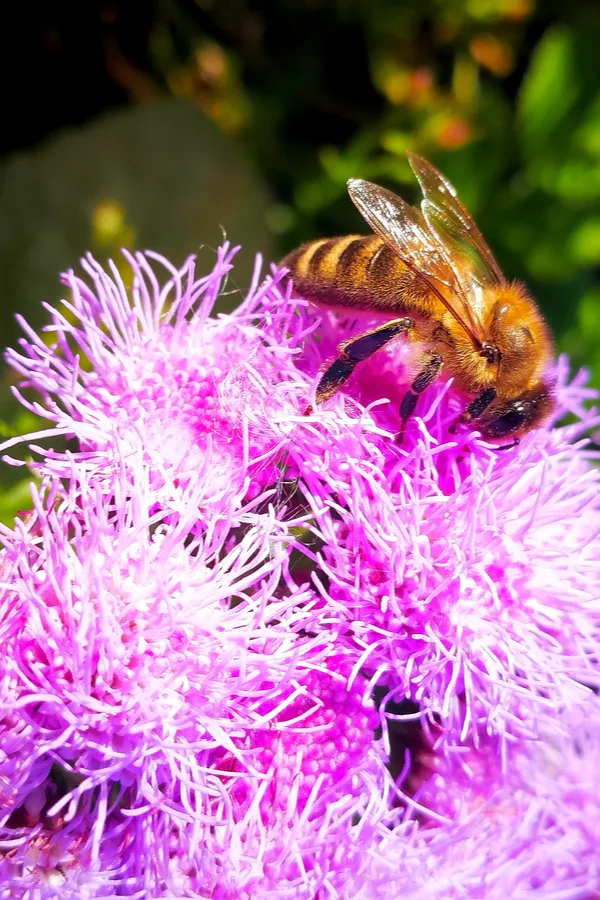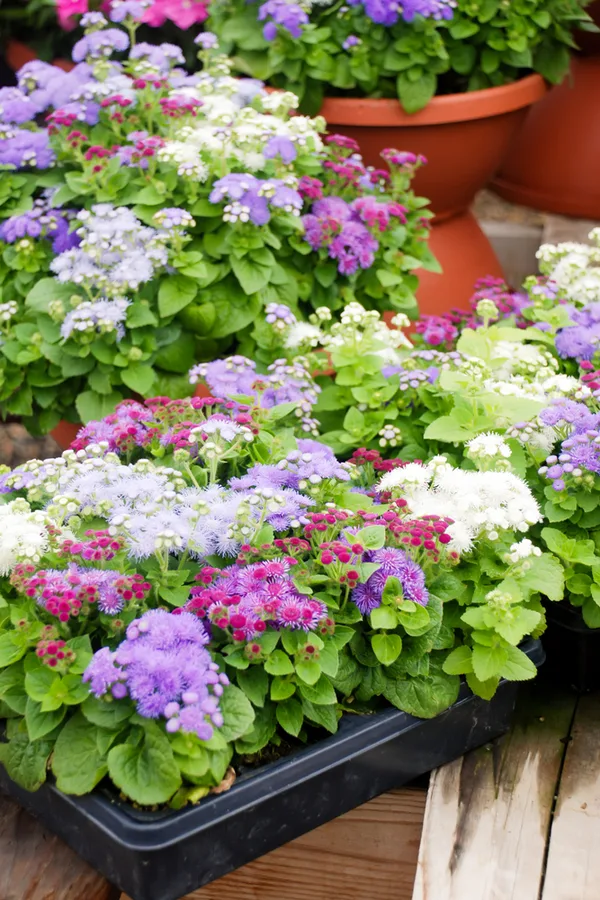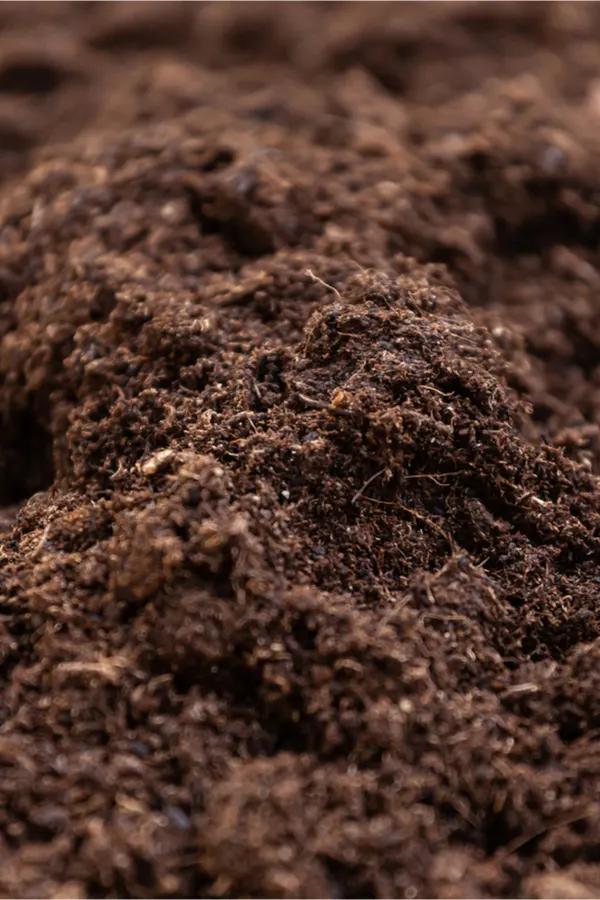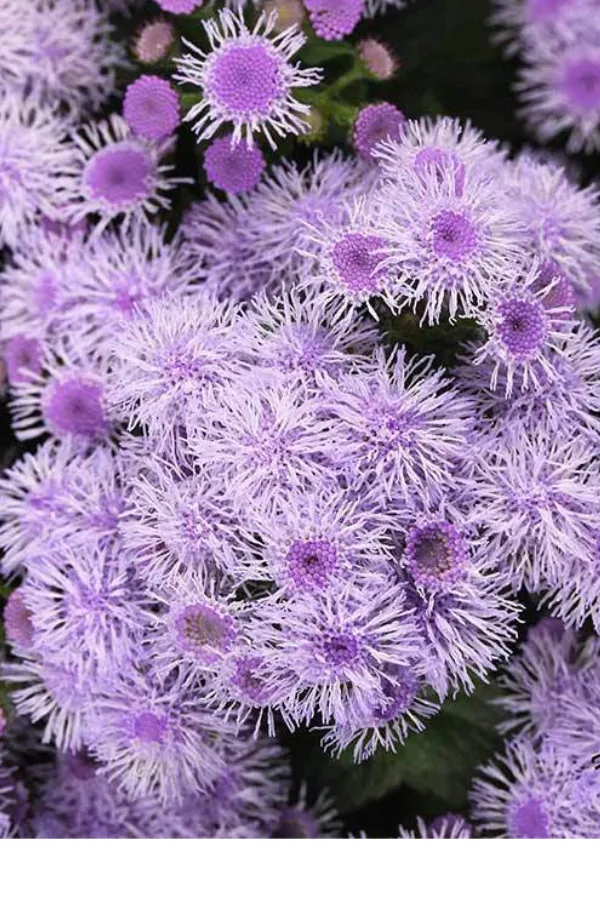Not only is Ageratum easy to plant and grow, it will fill your flowerbeds, pots and containers with unique and gorgeous blooms from late spring all the way to the first frost!
If you are looking for an alternative to the everyday common varieties of annual flowers, ageratum is an excellent choice. Often referred to as Floss Flower, Ageratum’s all season flowering power and unique pom-pom style blooms provide plenty of pop wherever it grows.
And, depending on the variety, it can be perfect for filling large spaces in flowerbeds, containers or hanging baskets. In fact, ageratum can be found in a wide swath of growing habits.

There are some varieties that mature at just 4 to 6 inches in height. Others, such as Blue Horizon, soar to 24″ tall or more and can fill large spaces in flowerbeds.
As for colors, although blue is by far the most common, ageratum can also be found with red, white and even pink blooms. And not only are the flowers stunning to humans, they also attract key pollinators to your landscape.
How To Grow Ageratum
Ageratum can be started from seed indoors, or grown easily from seeds directly sown into beds. Transplants are a great way to get early season blooms, especially when planting in containers and baskets.
When growing transplants, sow seeds indoors 6 to 8 week before planting day. For sowing directly outdoors into beds, ageratum will germinate and grow better if the soil is allowed to first warm.

Sow seeds after the threat of frost has passed, allowing the soil to warm to at least 55 (F) degrees. A week or so of daytime temperatures in the 70’s and lows in the low 50’s is usually enough to warm the soil enough for planting.
Planting Ageratum
Ageratum will bloom best in locations with full sun. Make sure to find a location where plants will receive at least 6 to 8 hours of direct sunlight each day.
Although it can grow and survive in shadier locations, bloom sets will suffer from not enough light. This can especially be an issue for hanging baskets that are placed under porch eaves or roof lines. Always remember that when it comes to ageratum, the more sun the better!
Like most annuals, ageratum grows best in fertile, loose and well draining soil. When planting in beds, work in generous amounts of compost before seeding or placing transplants.
For transplants, use a 50/50% ratio of soil and compost to fill planting holes. This will allow plenty of nutrients for plants as they grow and establish in the beds.

Water the plants or seeds in well at the time of planting to help establish in the soil. If planting transplants, mulch around plants to help conserve moisture in the soil. For seedlings, allow seeds to germinate and establish before applying mulch.
Summer Care – How To Grow Ageratum
As an annual flower, ageratum will bloom continually all season long. With that said, there are a few things you can do to help keep the blooms coming on strong and steady all the way into late fall.
First, as plants are beginning to grow, pinch back the top growth to create more dense foliage. This will in turn allow for more surface area for blooms and flowers to fil the plants.

Ageratum are fairly drought resistant, but will flower more profusely with adequate water. Plants should receive at least 1 inch of water per week, either from rain or watering.
In addition, providing the plants with a steady and light application of fertilizer every few weeks encourages strong blooming. For ageratum, use an all-purpose, balanced, slow release fertilizer.
Granular fertilizers work well, as will liquid fertilizers such as compost tea. Keep the feedings light but on a consistent basis to supply a steady stream of nutrients. Fertilizing ever 14 to 21 days with light applications will keep plants blooming strong.
Deadheading To Promote More Blooms – How To Grow Ageratum
Last but not lease, regular deadheading is a must for keeping bloom production high. When old or decaying blooms remain on the plant, the plant will use a portion of it’s energy to attempt to maintain them.

But by removing flowers that are past their prime, all of the plant’s energy will go towards new bloom production.
Here is to planting and growing ageratum in your landscape this year – and to enjoying beautiful blooms from late spring until the first frost! For more articles on annual flowers, check out our Annual Flower Tab on the blog.
This Is My Garden is a website dedicated to spreading the love and knowledge of gardening around the world. We publish two new garden articles each week. This article may contain affiliate links.

